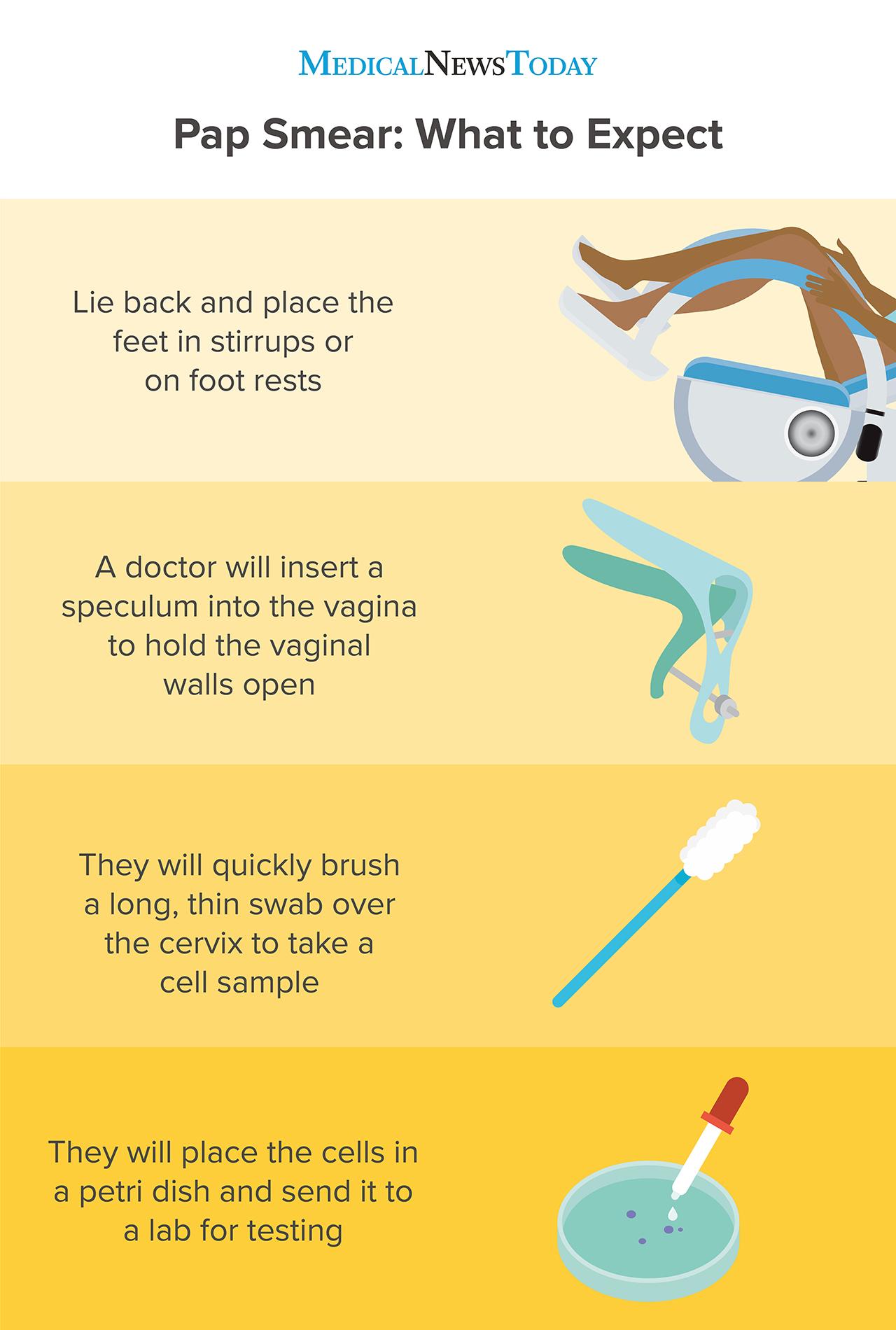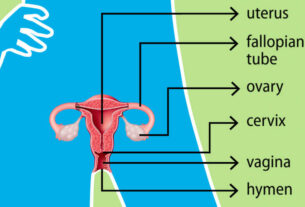In a world where medical advancements continue to save lives, one procedure stands as a powerful tool in the fight against cervical cancer: the Pap smear.
By simply collecting cells from the cervix, this routine test holds the key to early detection and potentially life-saving treatments.
Discover the importance of this procedure and unravel the mysteries of abnormal results in just a few moments.
pap smear
A Pap smear, also known as a Pap test, is a procedure used to test for cervical cancer in women.
It involves collecting cells from the cervix, the lower end of the uterus.
Detecting cervical cancer early through a Pap smear increases the chance of a cure, and it can also detect changes in cervical cells that may indicate future cancer development.
Pap smears are usually done in conjunction with a pelvic exam and may be combined with a test for human papillomavirus (HPV) in women over 30.
Pap testing is generally recommended to begin at age 21 and is repeated every three years for women ages 21 to 65.
However, certain risk factors may require more frequent Pap smears regardless of age.
After a total hysterectomy, the need for ongoing Pap smears should be discussed with a doctor.
The procedure is safe and involves the insertion of a speculum into the vagina to collect cervical cell samples.
These samples are examined in a laboratory, and abnormal results may require further testing, such as colposcopy or biopsy.
Key Points:
- Pap smear is a procedure used to test for cervical cancer in women.
- It involves collecting cells from the cervix.
- Early detection through a Pap smear increases the chance of a cure and can detect changes in cervical cells indicating future cancer development.
- Pap smears are usually done in conjunction with a pelvic exam and may include an HPV test for women over 30.
- Recommended to begin at age 21 and repeated every three years for women ages 21 to 65, with more frequent smears required for certain risk factors.
- Ongoing need for Pap smears should be discussed with a doctor after a total hysterectomy as the procedure is safe and involves collecting cervical cell samples for examination in a laboratory, with abnormal results potentially leading to further testing.
pap smear – Watch Video
https://www.youtube.com/watch?v=i2YZYUYqjEY
💡
Pro Tips:
1. The pap smear, also known as the Pap test, was named after its inventor, Dr. George Papanicolaou, a Greek-American researcher.
2. Contrary to popular belief, the pap smear doesn’t detect cervical cancer itself. Instead, it is used to identify abnormal cells in the cervix, which could potentially develop into cancer if left untreated.
3. The pap smear became widely accepted as a screening tool for cervical cancer in the 1940s, leading to a significant decrease in mortality rates associated with the disease.
4. The recommended age for women to start getting regular pap smears has changed over the years. Previously, it was recommended for women to start at age 18 or upon becoming sexually active. However, current guidelines suggest starting at age 21, regardless of sexual activity status.
5. In some cases, pap smears can yield false-positive or false-negative results. False positives can cause unnecessary stress and further medical testing, while false negatives can lead to delayed detection and treatment of potential abnormalities.
Introduction to Pap Smear
The Pap smear, also known as a Pap test, is a medical procedure conducted to detect cervical cancer in women. It involves collecting cells from the cervix, which is the lower end of the uterus. This simple yet crucial test has saved countless lives by identifying potential cancerous cells at an early stage. The importance of Pap smears cannot be overstated, as they provide an opportunity to prevent and treat cervical cancer effectively.
Purpose of Pap Smear
The primary purpose of a Pap smear is to screen for cervical cancer. By examining the collected cells from the cervix, medical professionals can identify any abnormalities that may indicate cancer development. Detecting cervical cancer at an early stage significantly increases the chances of successful treatment and cure.
Additionally, Pap smears can also detect changes in cervical cells that may indicate future cancer development. This early detection allows for appropriate medical interventions, such as regular monitoring or further diagnostic tests.
Early Detection and the Chances of Cure
Early detection is crucial when it comes to cervical cancer. By identifying abnormal cells through a Pap smear, medical professionals can initiate timely treatments that greatly improve the chances of cure. This screening procedure has been instrumental in reducing the mortality rate associated with cervical cancer. Regular Pap smears enable women to take control of their health and ensure that any potential threats are identified and addressed promptly.
Pap Smear and Future Cancer Development
A Pap smear is a crucial medical test that serves two purposes: detecting existing cervical cancer and identifying changes in cervical cells that could suggest future cancer development. Through this screening, physicians can proactively take measures to prevent the progression of abnormal cells to cancerous ones. In turn, this allows for timely interventions such as close monitoring, lifestyle modifications, or further diagnostic tests to reduce the risk of future cancer development and promote overall health.
Pap Smear in Conjunction with Pelvic Exam
The Pap smear is typically conducted along with a pelvic exam. During the pelvic exam, a healthcare professional examines the reproductive organs, specifically the cervix. By combining the Pap smear with a pelvic exam, medical professionals can obtain detailed information regarding a woman’s gynecological health. This dual approach ensures a precise assessment and allows for a comprehensive evaluation of any potential concerns, providing women with a (better) understanding of their health status.
Pap Test and HPV Testing
In women over 30, the Pap test may be combined with a test for human papillomavirus (HPV), a sexually transmitted infection that can cause cervical cancer. HPV testing helps identify the presence of high-risk strains of the virus, which can increase the risk of cervical cancer. By conducting both tests simultaneously, medical professionals can assess the likelihood of developing cervical cancer more accurately.
This combined approach assists in early detection and provides a comprehensive evaluation of a woman’s cervical health.
- The Pap test and HPV testing can be combined for women over 30.
- HPV testing helps identify high-risk strains of the virus.
- Conducting both tests simultaneously can provide a more accurate assessment of the likelihood of developing cervical cancer.
- This combined approach assists in early detection and comprehensive evaluation of cervical health.
Recommended Age to Start Pap Testing
Doctors generally recommend starting Pap testing at the age of 21. Beginning screening at this age ensures that potential abnormalities are detected early, allowing for prompt medical interventions if necessary. By initiating regular Pap testing, women take proactive steps toward safeguarding their reproductive health and overall well-being.
- Pap testing should begin at age 21
- Early detection of abnormalities is crucial
- Regular screening is essential for reproductive health and well-being.
“Taking proactive measures to safeguard reproductive health is of paramount importance.”
Frequency of Pap Testing for Different Age Groups
For women aged 21 to 65, Pap testing is typically repeated every three years. This regular interval is important in detecting potential abnormalities while minimizing unnecessary tests. However, women over 30 have the option to consider Pap testing every five years if combined with HPV testing. This extended interval still ensures reliable results, thanks to the combined effectiveness of Pap and HPV tests. Additionally, women in this age group may also choose to opt for HPV testing alone.
Factors That May Require More Frequent Pap Smears
Certain risk factors increase the likelihood of cervical cancer and may warrant more frequent Pap smears regardless of age. These risk factors include:
- A previous diagnosis of cervical cancer
- Exposure to diethylstilbestrol (DES)
- HIV infection
- A weakened immune system
- A history of smoking
By recognizing these risk factors, medical professionals can tailor screening protocols to ensure early detection and appropriate medical interventions.
“Cervical cancer risk factors include a previous diagnosis of cervical cancer, exposure to diethylstilbestrol (DES), HIV infection, a weakened immune system, or a history of smoking.”
Pap Smears After a Hysterectomy
After a total hysterectomy, which involves the surgical removal of the uterus and cervix, the need for ongoing Pap smears should be discussed with a doctor. Depending on the patient’s individual circumstances and medical history, further Pap testing may not be necessary. However, it is essential to consult a healthcare professional to determine the most appropriate course of action to monitor one’s gynecological health post-hysterectomy.
In conclusion, the Pap smear is a vital screening procedure that plays a fundamental role in the early detection and prevention of cervical cancer. By undergoing regular Pap smears, women can take control of their health and ensure that any potential abnormalities are identified and addressed promptly.
The significance of Pap smears cannot be overstated, as they provide a lifeline for women to achieve:
- Early detection
- Increased chances of cure
- Peace of mind knowing that their cervical health is being closely monitored.
💡
You may need to know these questions about pap smear
How painful is a Pap smear?
While a Pap smear is generally described as uncomfortable rather than painful, every individual’s experience may vary. Some people may feel only minimal discomfort or a slight pinch during the procedure, while others may find it more intense. It is important to communicate any prolonged or severe discomfort with your healthcare provider to ensure that everything is normal. Although light bleeding may occur afterwards, pain or cramping should not be present during or after the procedure.
How often do I need a Pap smear?
The recommended frequency for Pap smears varies depending on age. For women between the ages of 21 and 29, a Pap test alone should be conducted every three years. Alternatively, for women aged 25 to 29, HPV testing alone can be considered, with Pap tests being the preferred choice. However, for women aged 30 to 65, three testing options are available. They can choose to undergo both Pap tests and HPV tests every five years.
Can Pap smear detect STD?
A pap smear is primarily used to detect precancerous cells on the cervix, and it is not specifically designed to detect sexually transmitted diseases (STDs). However, during a pap smear, the presence of human papillomavirus (HPV) can be detected. HPV is a sexually transmitted infection that can lead to cervical cancer. While a pap smear does not directly test for other STDs, healthcare providers may conduct additional tests or screenings for STDs if deemed necessary based on the patient’s medical history or symptoms.
What age do you get a Pap smear?
According to the USPSTF recommendation, women should start getting Pap smears at the age of 21. The recommended screening interval is every 3 years for women aged 21 to 65 years. However, for those between the ages of 30 and 65 who prefer a longer interval, a combination of cytology and HPV testing is recommended every 5 years. It is important for women to consult with their healthcare provider to determine the best screening plan based on their individual medical history and risk factors.
Reference source
https://www.mayoclinic.org/tests-procedures/pap-smear/about/pac-20394841
https://my.clevelandclinic.org/health/diagnostics/4267-pap-smear
https://www.acog.org/womens-health/experts-and-stories/the-latest/why-annual-pap-smears-are-history-but-routine-ob-gyn-visits-are-not
https://familymedicineaustin.com/does-a-pap-smear-test-also-work-for-std/



